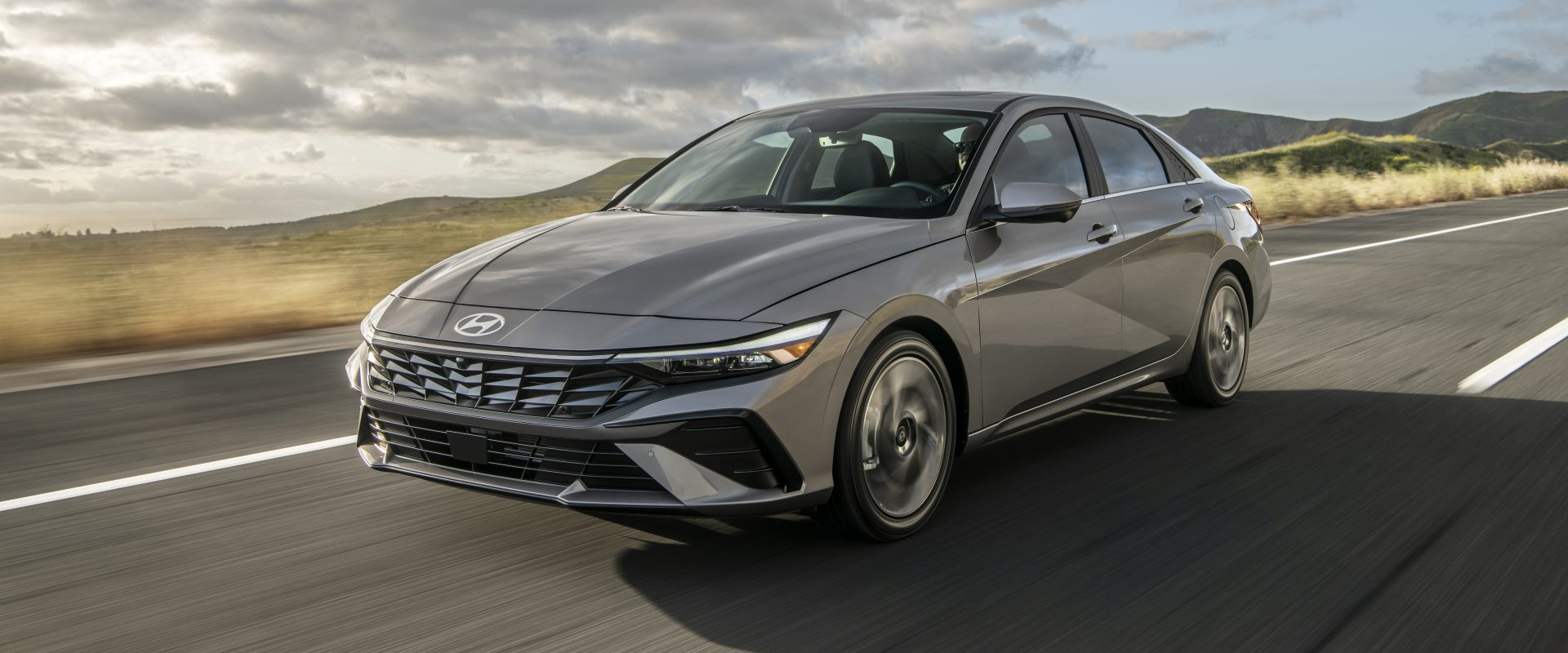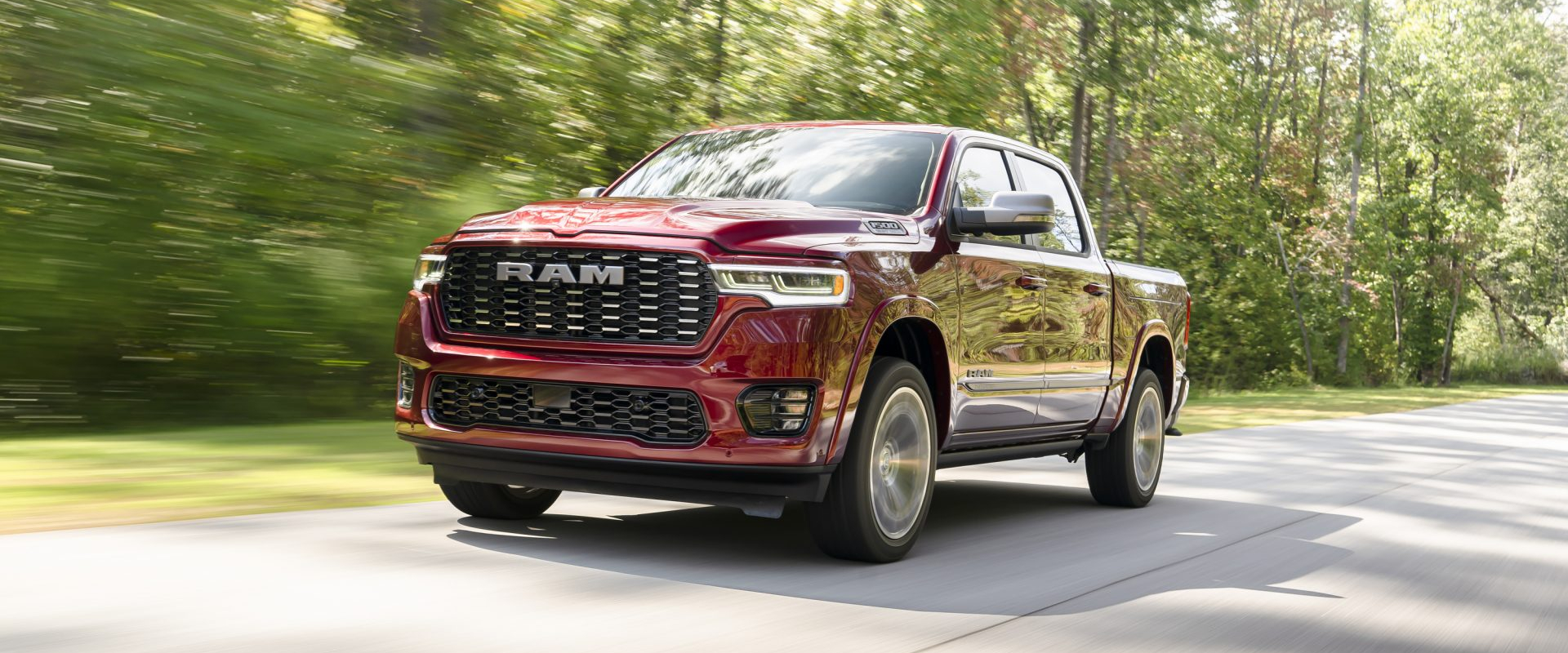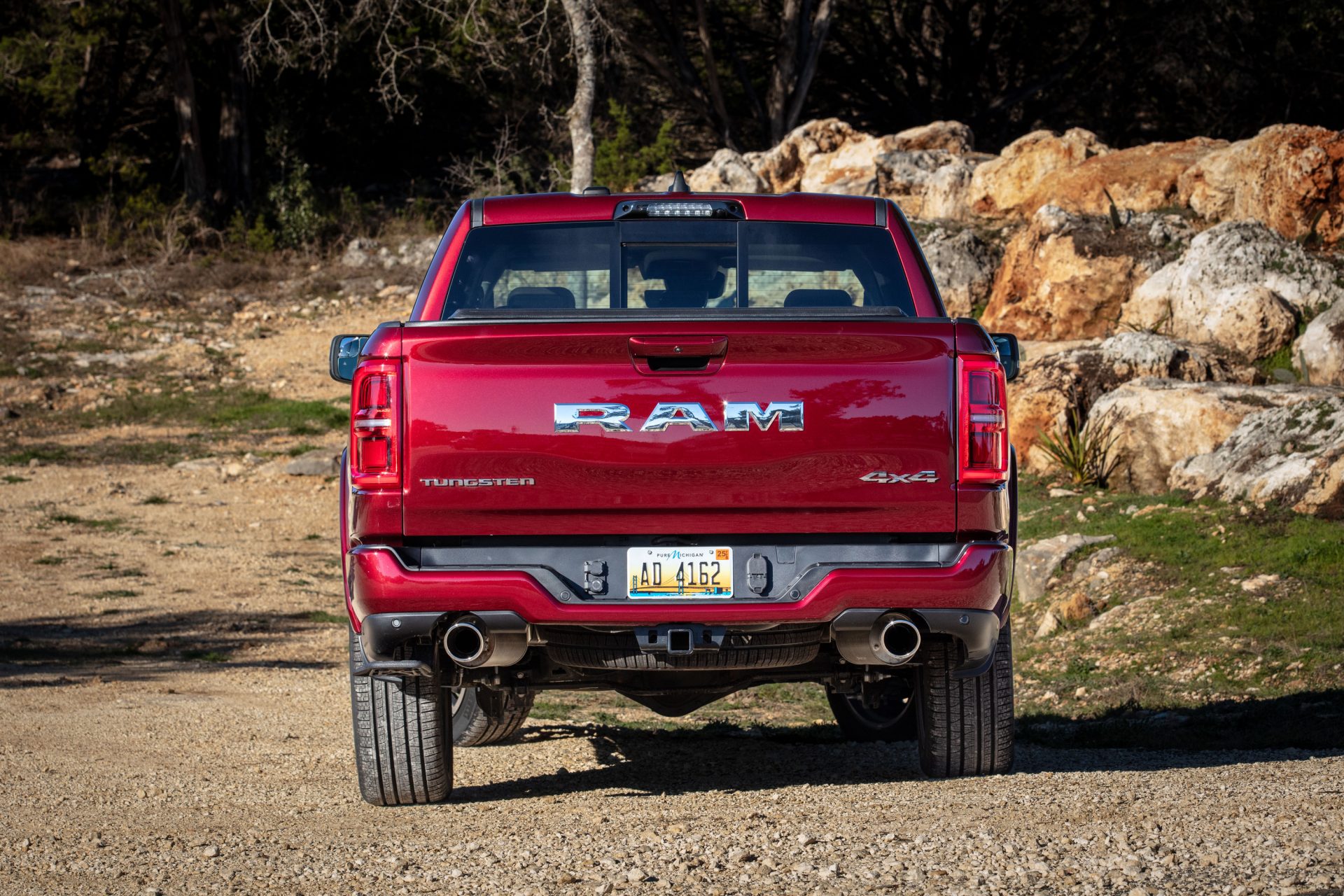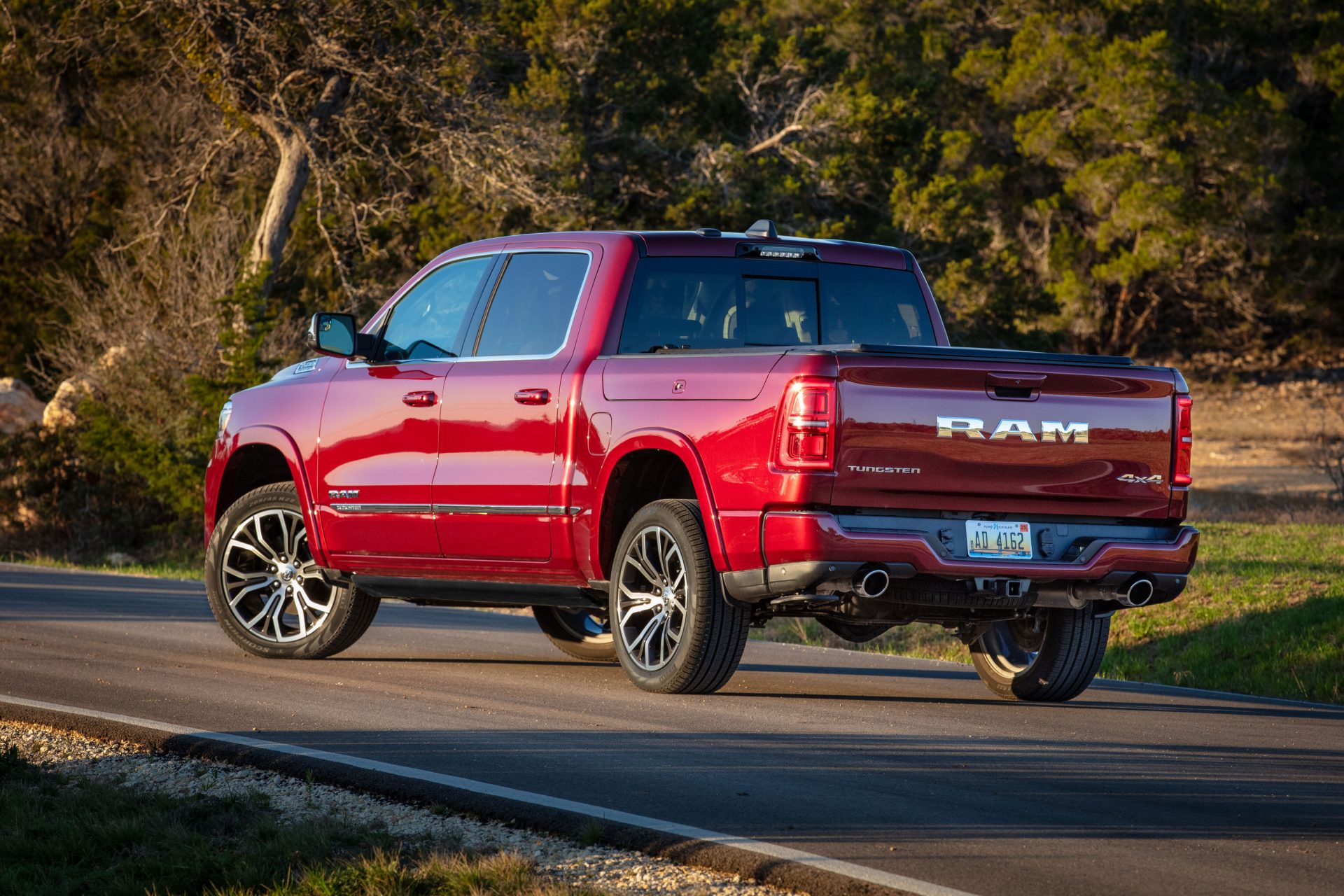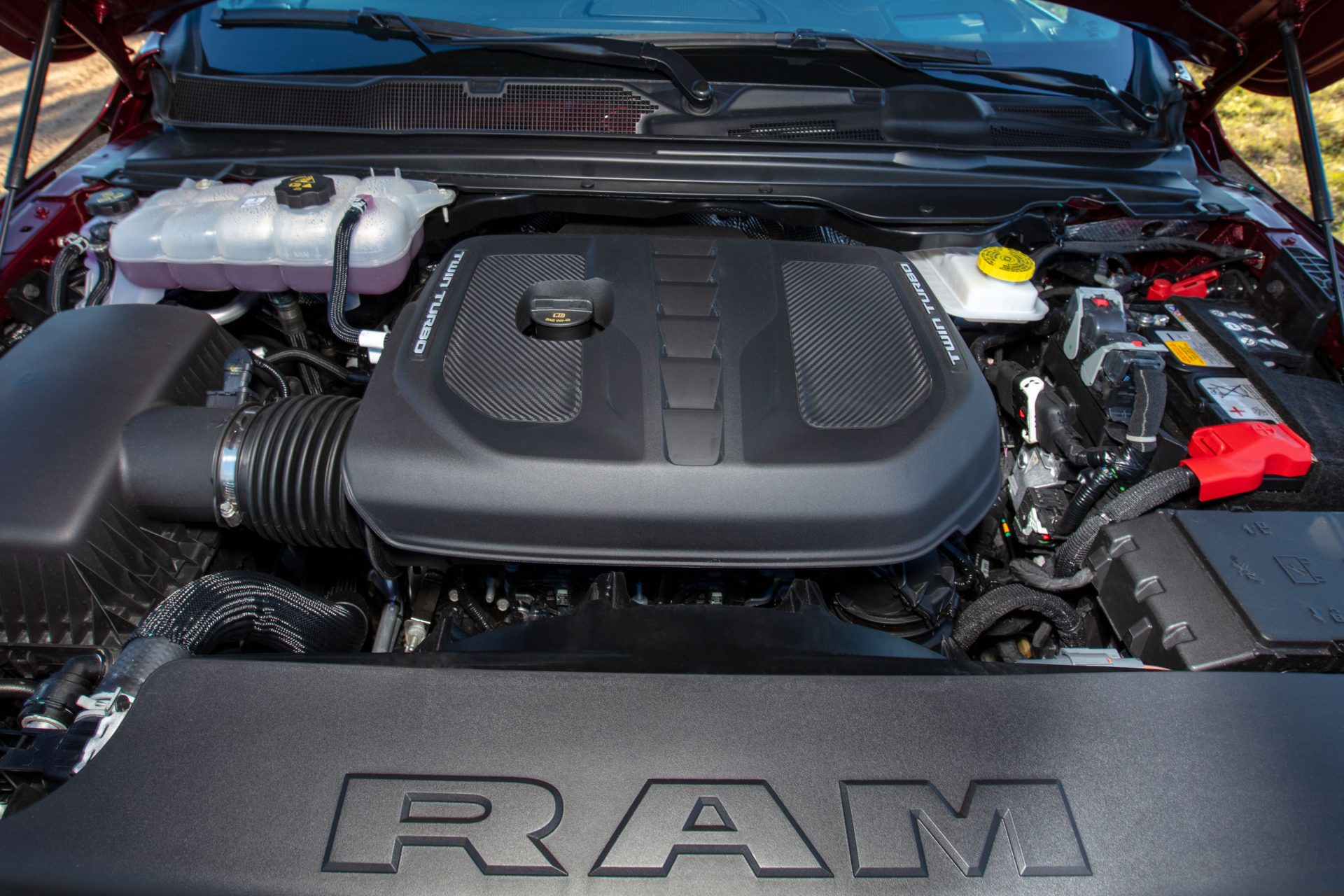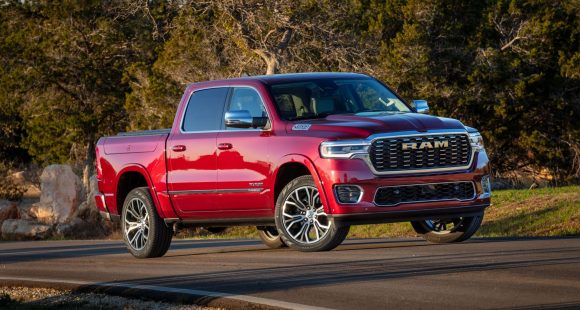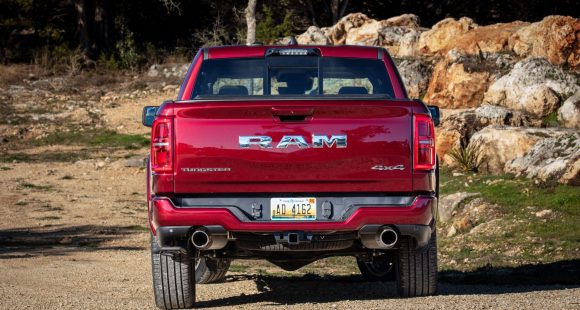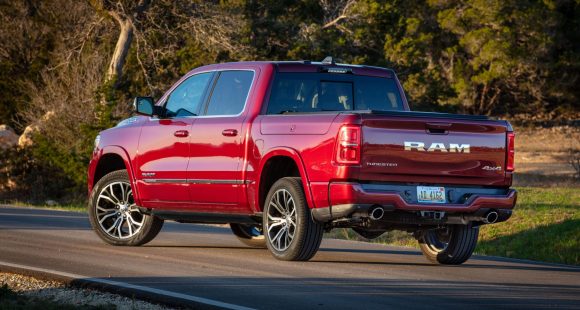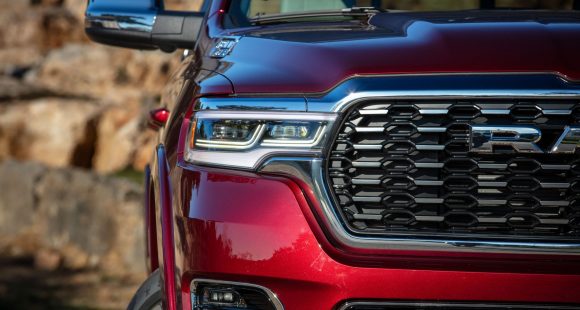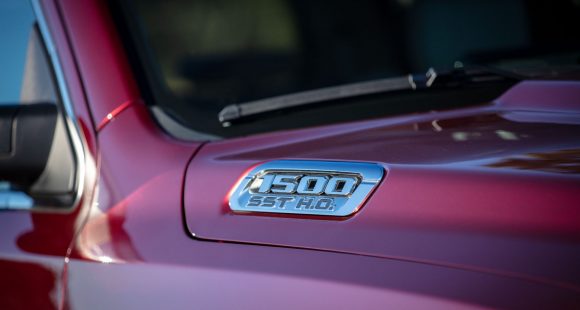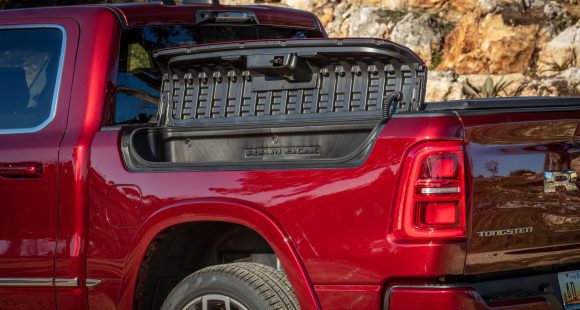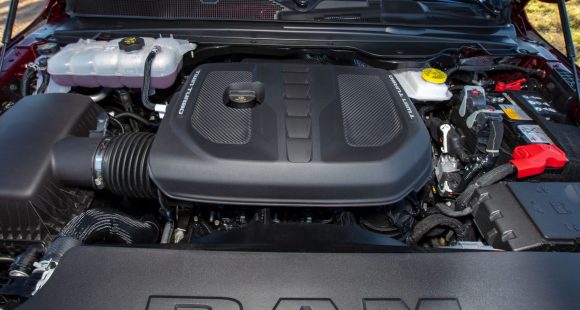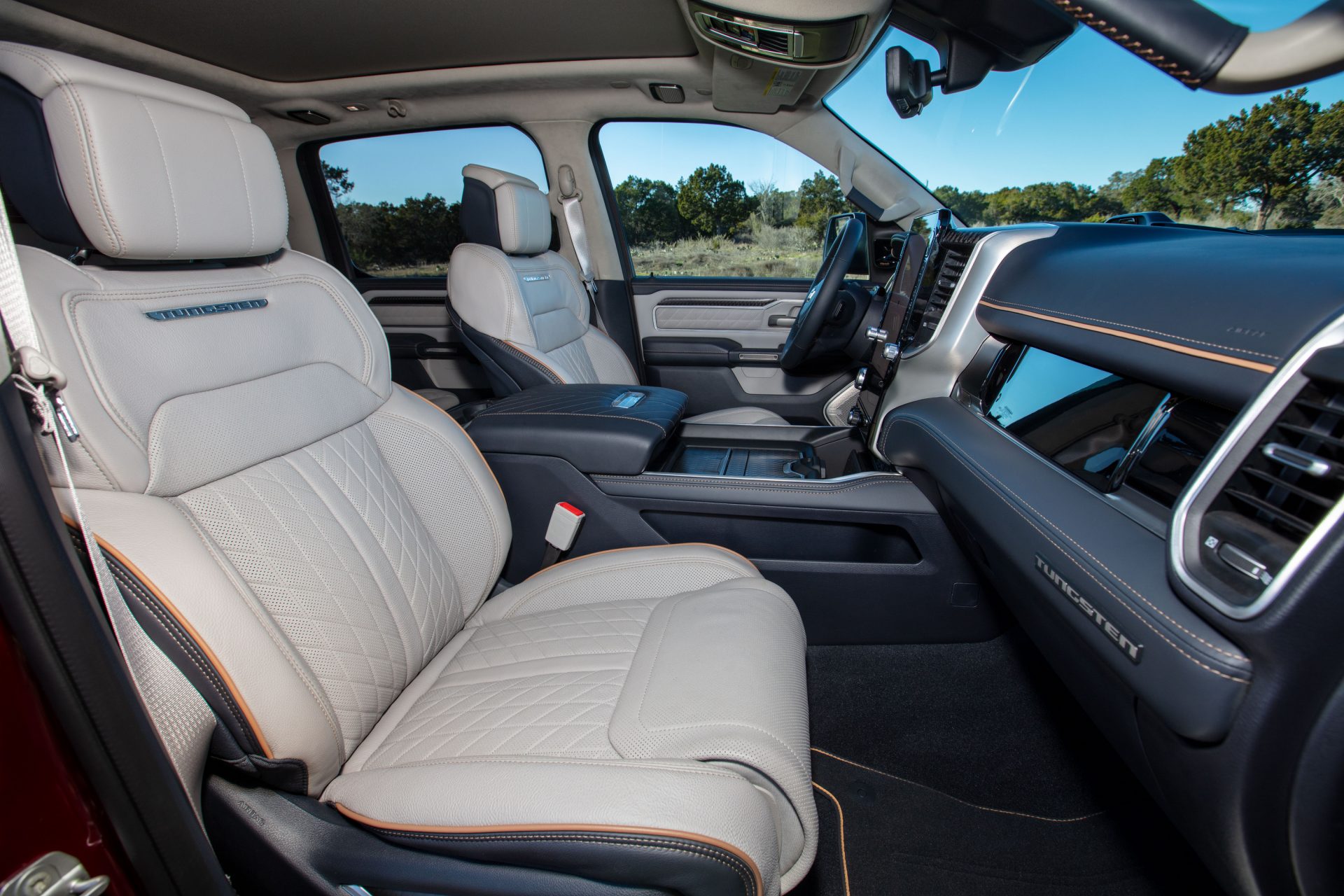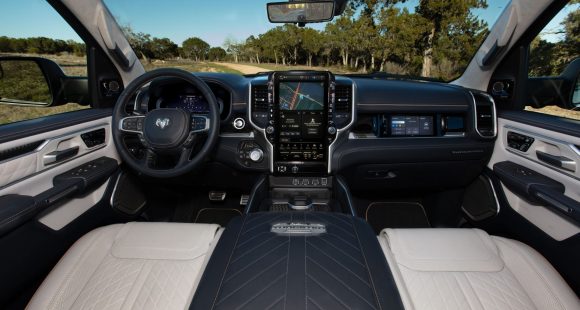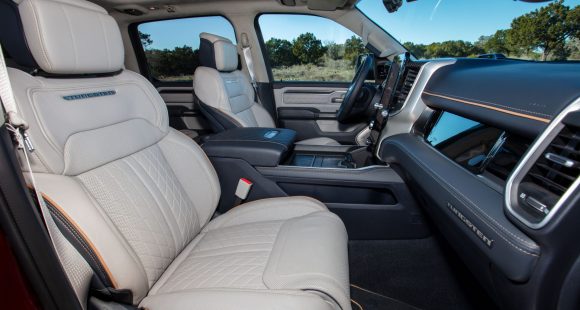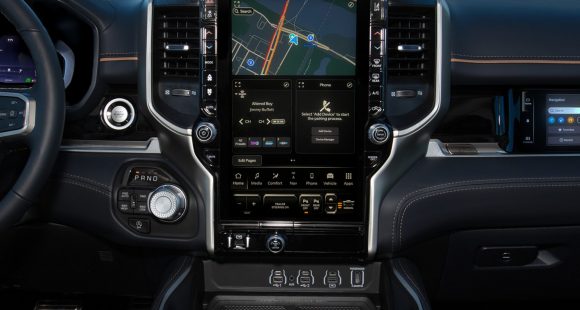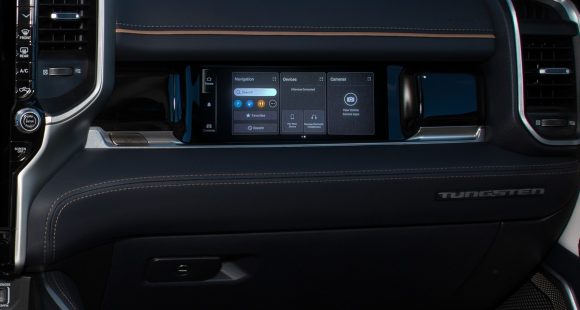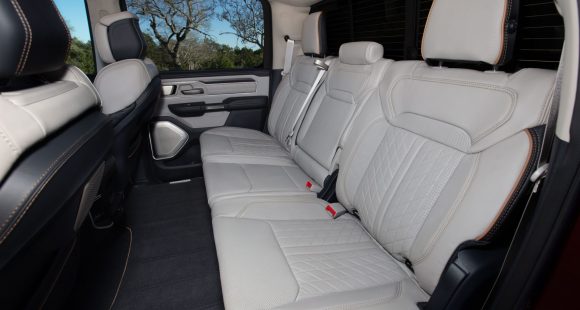2014 Chevrolet SS
It’s been 18 years since Chevrolet has offered a rear-wheel-drive sport sedan in their line-up. But it’s not like GM was out of the game entirely, they just left such drivetrains to Cadillac and Pontiac, not to mention their Australian Holden brand, which is where the 2014 Chevrolet SS comes from. Well after a brief fact finding mission, here’s our scoop on the General’s new “rear” admiral.
Yes, Chevrolet is back in the rear-wheel-drive performance sedan business! And you don’t have to be a fan of NASCAR to be excited about that, as with the 2014 SS the bowtie brand now has a fresh and complete suite of high-pro offerings from the all-new Corvette to the refreshed Camaro, and even the small but potent Sonic RS.
The SS joins the Chrysler RWD duo of Charger and 300, and while that’s a small competitive set, we think GM has their sights on loftier competition like European sport sedans. As like other recent GM cars, the SS spent significant development time on the Nurburgring.
And it didn’t take us long, while driving through the many sweeping corners near Palm Springs, California to find the SS’s near perfect balance very rewarding. It is a big car, yet weighs in at under 4,000-pounds. We found the nose a tad heavy; still it felt precise, like driving a 4-door Camaro with better forward visibility.
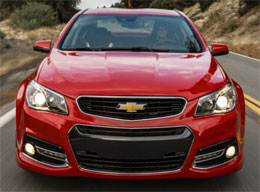 And that makes sense, since both SS and Camaro are based on Holden Commodore architecture from GM Australia; and since an SS was in the works from the beginning, there’s been no Americanization compromise.
And that makes sense, since both SS and Camaro are based on Holden Commodore architecture from GM Australia; and since an SS was in the works from the beginning, there’s been no Americanization compromise.
Much like the Camaro, rear visibility is not so great, with a huge deck lid spoiler in your rear view mirror.
This chassis was also under the short lived Pontiac G8, but has been updated since then; and now has belt-driven variable assist electric power steering. While there’s nothing high tech about that, we found it very dialed in with quick response, though even more feel would be nice.
But, while the SS’s firm suspension is great in the twisties, it gets tiresome on the highway. Better seats would help, as would GM’s Magnetic Ride suspension which is not available. All SS’s wear a limited-slip rear and a 6-speed automatic that we found a little slow on response when left alone, unless in Sport mode. Better to use the standard paddle shifters.
Natch, there’s GM small-block power burbling under the hood. An LS3 6.2-liter V8 with nice level numbers of 415-horsepower and 415 lb-ft. of torque. Exhaust gives a nice bark, but inside it remains quiet, which can be good or bad depending on what’s music to your ear. 0-60 time is right at 5.0 seconds.
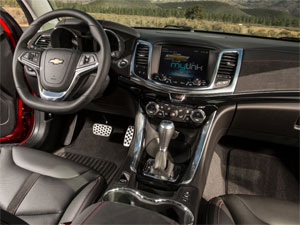 Inside, things are more sport than luxury; with plenty of SS logos, red stitching, and chrome dash trim. Gauges are equally sporty, featuring the familiar GM deeply hooded twin dial setup with color info screen in between; only hoods are round versus the Camaro’s squarish corners. A color Head Up Display is standard.
Inside, things are more sport than luxury; with plenty of SS logos, red stitching, and chrome dash trim. Gauges are equally sporty, featuring the familiar GM deeply hooded twin dial setup with color info screen in between; only hoods are round versus the Camaro’s squarish corners. A color Head Up Display is standard.
Back seat space and comfort are the real strong points here; as seats are large and well padded, offering great comfort for 2 or 3 in a pinch. There’s also good cargo space in the trunk at 16.4 cubic-ft. Chevrolet’s MyLink with 8-inch touch screen display includes standard navigation, and the SS is the first Chevrolet to feature Automatic Parking Assist.
Exterior design is testosterone filled with a muscular nose-down stance, flared out fenders, and staggered 19-inch wheels with 245/40 rubber up front, 275/35 in the rear. Though the friendly new Chevrolet face keeps this Super Sport from being too aggressive. HID headlights and LED running lights are standard.
Fuel Economy is more old school muscle car than modern sport sedan with Government Ratings of 14-City, 21-Highway, and 17-Combined. That means a Gas Guzzler tax and a poor Energy Impact Score of 19.4-barrels of annual oil use and 8.9 tons of CO2 emissions.
The SS is truly an international affair, being built in Australia, developed in Germany, with a big Detroit designed power V8 that’s actually assembled in Mexico.
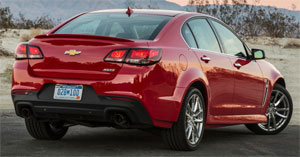 Fortunately, pricing is simple as there are very few options and just one model of SS starting at $45,770. That’s very close to an SRT8 Charger sedan.
Fortunately, pricing is simple as there are very few options and just one model of SS starting at $45,770. That’s very close to an SRT8 Charger sedan.
It truly is great to see Chevrolet return to the full-size rear drive sedan ranks. And while the SS is fun that we enjoyed more than we thought we would, it’s not as refined as the Charger, which would probably still be our hot-rod big four-door pick.
Another wrinkle is the unknown future of the SS. GM says it will stop building vehicles in Australia by 2017. Let’s hope the Chevrolet SS finds a new home in our home before then; and perhaps a little more refinement as well, or else it may quickly disappear like the G8. And, that would be a real pity!
Specifications
- Engine: 6.2-liter V8
- Horsepower: 415
- Torque: 415 lb-ft.
- 0-60 mph: 5.0 seconds
- EPA: 14 mpg city/ 21 mpg highway
- Energy Impact: 19.4 barrels of oil/yr
- CO2 Emissions: 8.9 tons/yr
2024 Hyundai Elantra
Basic Transportation At Its Best…And That Is A Compliment
For those of you who write in every week bemoaning the fact that all we seem to do around here is test incredibly expensive cars and EVs that only the very well to do can afford, this one’s for you. It’s a commuter and budget friendly mainstay from Hyundai, the compact Elantra sedan. And, it has been nicely updated for 2024.
We clearly do enjoy driving high-performance machines and ultra-luxury rides around here, but like most of you, when it comes time to drive home at the end of a long workday, we do so in something much more practical and affordable, like this 2024 Hyundai Elantra sedan.
If you’re thinking the front end has gotten more aggressive, you’re right. Hyundai calls it a “Shark Nose” theme, and we’re guessing they were thinking more Great White than Hammerhead, though Megamouth shark would also apply. It helps for a low and wide look; more substantial than the typical compact. Other additions for ’24 include slimmer daytime running lights, revised stainless steel Hyundai emblem, reshaped front fenders, sport sedan-style rear diffuser with silver trim; a parametric pattern added to the C-Pillar, and new LED taillights that take up a lot more space on the highly sculpted decklid. Plus, new wheel designs in sizes ranging from 15- to 18-inches.
Standard engine in SE, SEL, and Limited grades is this naturally aspirated 2.0-liter I4 with 147 horsepower and 132 lb-ft of torque. Even with no hybrid assistance, it gets substantial Government Fuel Economy Ratings of 31 City, 40 Highway, and 34 Combined; we averaged a great 38.6 mpg of Regular.
Those high fuel economy numbers mean acceleration times are pretty high as well. It was in no particular hurry to get off the line at our test track, as after a slight jolt of power, it felt pretty sluggish going down the track, taking us a lengthy 9.4 seconds to hit 60 mph. Hyundai’s Intelligent Variable Transmission has some realistic simulated gear shifts built in, and they not only provided the feel of a true automatic, but kept engine noise from becoming overbearing. And while this 2.0-liter may not be a house-on-fire off the line, it has no problem keeping up with traffic, and feels like just the perfect amount of power for a practical and safe commuter car.
There are other engine options too. Two choices if you want to go faster, a 1.6-liter turbo with 201 horsepower in the Elantra N Line, and a 276-horsepower turbocharged 2.0-liter for the Elantra N; plus, one with even better fuel economy, a 1.6-liter hybrid with a 139 horsepower total output.
And despite some significant understeer, there was good feel through the cones of our handling course, both in steering and chassis feedback. We wouldn’t quite call it “point and shoot,” but it responded to inputs fairly quickly, with only moderate body roll. All-in-all, when it comes to performance, it doesn’t claim to bring a whole lot to the table, but does clearly overachieve with what it does bring.
And Hyundai is always overachieving when it comes to packing in features, yet has found a way of keeping things refreshingly simple with a good mix of touchscreen and manual controls. Lots of space too, both up front in the surprisingly wide front buckets, and in the rear bench with ample room for three. Updates for all Elantra interiors include softer materials on the door panels, upgraded instrumentation and additional charging ports, plus a surround view monitor and new H-Tex simulated leather for Limited trim.
Elantra pricing starts with an SE at $22,775, the SEL comes in at $24,725, Limited begins at $28,215, and the sporty N Line starts at $29,615. If you’re interested in the hybrid, base Blue starts at $27,400 with Limited at $30,600.
Some might say there’s not a whole lot that’s earth shaking about the 2024 Hyundai Elantra, but that’s mostly why we like it so much. When it comes to just delivering good, basic transportation with a high dose of unexpected amenities, Hyundai delivers once again.
Specifications
- Engine: 2.0-liter I4
- Horsepower: 147
- 0-60 mph: 9.4 seconds
- 60-0 Braking: 111 ft (avg)
- MW Fuel Economy: 38.6 MPG (Regular)
- Transmission: IVT
- Torque: 132 lb-ft
- 1/4 Mile: N/A (Track Maintenance)
- EPA: 31 City / 40 Highway / 34 Combined
2025 RAM 1500
Ram’s New Hurricane Is Looking To Blow Away The Competition
For many years, the Dodge Ram was the also-ran in the full-size pickup truck race. And because of that, what is now known as just Ram has never been afraid to try new things, whether it’s big-rig style, unique suspension designs, innovative Ram Box storage, or delivering luxury car-like interiors, so what’s next? Well, let’s find out.
Well, as you’ve no doubt heard by now, the big news for this updated 2025 Ram 1500 is that there’s no more Hemi V8 engine under the hood. What? A Ram with no Hemi? What’s the world coming to? Are the Dodge boys rolling over in their collective grave? And am I stuck with a V6 now? Not so fast! Where you use to see Hemi, get ready to say Hurricane!
That’s right, Ram’s got a Hurricane. First seen in Jeep’s Wagoneer, the Stellantis Corporation’s all-new twin-turbo inline-six will now be the top option for Ram truck buyers. Based on our early drive time in the Texas Hill Country, we’re not upset at all, and you shouldn’t be either.
Why an inline-six? Well, in general terms, I-6s are better balanced, run smoother, and can deliver more torque at lower RPM. Just ask any of the truckers you see going down the road hauling more than 20 tons of cargo with their inline-sixes. Ford has already proven that truck buyers will embrace turbo-sixes with their EcoBoost V6, and now Ram has one-upped them with a big-rig style inline-six.
There are actually two versions of this 3.0-liter available. Standard output is the same as in the Wagoneer at 420 horsepower, but the high-output version sees an increase from 510 to 540-horsepower here in the Ram, with 521 lb-ft of torque. That’s more than 100 lb-ft over the previous Hemi V8, which is significant enough for Ram to also put a beefier rear axle in place. Max tow rating is now 11,580 lbs.
Both versions work with an eight-speed automatic transmission, as does the standard 3.6-liter mild-hybrid V6 which carries over unchanged at 305 horsepower. It’s all wrapped in updated styling, of course. New sheet metal is smoother and more aerodynamic and, believe it or not, they’ve gone even bigger and bolder with the grille and its more prominent RAM letters; every trim level now gets its own specific grillwork.
But the Tungsten really sets itself apart inside, going more upscale and more comfortable than any Ram before it, which is definitely saying something.
We spent most of our time in the new top-level Tungsten, which throws off some serious city-slicker vibes with bright trim, unique LED lighting, 22-inch wheels, and power tailgate. It’s available exclusively with Crew Cab and a 5-foot 7-inch bed; Quad cabs and long beds are available in most other trims.
But the Tungsten really sets itself apart inside, going more upscale and more comfortable than any Ram before it, which is definitely saying something. There’s quilted leather seating, suede upholstery, diamond-knurled metal trim, a central 14.5-inch Uconnect 5 touchscreen, and an available 10-inch one for the passenger, plus a 12.3-inch digital gauge cluster. There’s even a bangin’ 23-speaker 1,228-watt sound system… and it sounds really good.
Thankfully, bed-side RamBox storage is still here too, and Rams can now get an onboard power inverter with 2 kilowatts of juice for tailgating or tools. A power-sliding rear window is standard on Laramie and above.
The Tungsten’s four-corner air suspension setup delivers an exceptionally smooth ride, even with the 22s; leaving us feeling more like a soccer mom on the run than a contractor headed to the jobsite. The inline-six is definitely a willing companion; the twin-turbo setup means each turbo is feeding boost to three cylinders, helping to deliver plenty of turbo lag-free acceleration off the line, and immediate passing power when called upon.
Four-wheel drive is standard with Tungsten along with Rebel, and Limited, it’s a $3,850 option in Tradesman, Big Horn, and Laramie models. While truck prices have continued to be on the rise, you can still get in a base Ram Tradesman for as little as $42,270. Most new Ram 1500s will probably transact in the $60,000 range, with the budget busting Tungsten reserved for high-rollers at $89,070.
Equal parts rugged and refined, with a new force to be reckoned with under the hood, the 2025 Ram 1500 is sure to be a bigger player than ever in the full-size truck game. And, this is just their leadoff hitter, as later in the year we’ll see two plug-ins in the lineup; including the full battery-electric REV and the switch-hitting Ramcharger with a range-extending onboard generator. This may just be the year of the Ram.
Specifications
As Tested
- Engine: 3.0-liter twin-turbo I6
- Horsepower: 540
- Max Towing Capacity: 11,580 lbs.
- Transmission: 8-speed automatic
- Torque: 521 lb-ft
- EPA: 15 City, 20 Highway, 17 Combined







